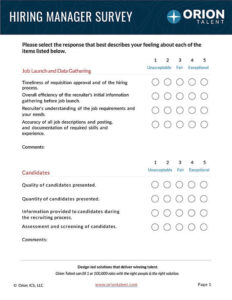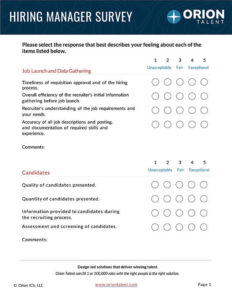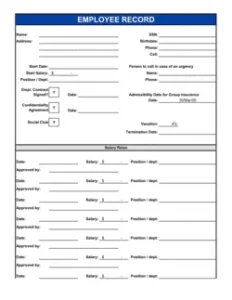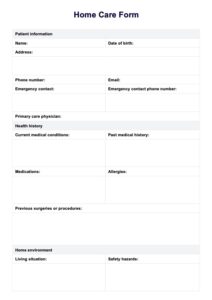So, you’re looking to get organized with your employee paperwork, huh? You’re in the right place. Running a business, no matter the size, involves a mountain of documentation. From hiring to performance reviews, and everything in between, keeping detailed and accurate records is absolutely crucial. Not only does it protect your business legally, but it also creates a transparent and professional environment for your employees. Think of it as building a solid foundation for a successful and compliant workplace.
The beauty of using an essential employee documentation template is that it streamlines the entire process. Instead of scrambling to create documents from scratch every time you need them, you have a consistent and readily available framework. This not only saves you time and resources but also ensures that all necessary information is captured in a standardized format. This consistency is key when dealing with compliance issues or potential legal challenges.
We’re going to dive into the essential components of robust employee documentation, highlighting the key templates you should have on hand and why they are so important. We’ll also discuss how to effectively utilize these templates to create a well-organized and legally sound HR system. Consider this your comprehensive guide to mastering employee documentation and building a stronger, more compliant business.
Why is Comprehensive Employee Documentation So Important?
Employee documentation is more than just filling out forms; it’s about creating a detailed record of an employee’s journey within your company. This record serves multiple critical purposes. First and foremost, it protects your business from potential legal liabilities. Proper documentation provides evidence of your company’s adherence to employment laws, should a dispute arise. Think of it as your shield in a litigious world.
Beyond legal protection, employee documentation also contributes significantly to effective performance management. Regular performance reviews, documented goals, and records of both positive and negative feedback provide a clear and objective basis for evaluating employee performance. This allows you to identify areas where employees excel, as well as areas where they may need additional support or training. This, in turn, can lead to improved employee performance and increased job satisfaction.
Consider the onboarding process. A well-documented onboarding process ensures that new hires receive consistent information and training, reducing the risk of errors and misunderstandings. This can dramatically improve employee retention rates, saving you time and money on recruitment and training. Documented policies and procedures, readily available to employees, create a clear understanding of expectations and responsibilities.
Furthermore, accurate and accessible employee records are essential for administrative tasks such as payroll processing, benefits administration, and compliance reporting. Having all the necessary information readily available streamlines these processes, reducing the risk of errors and ensuring that employees are paid accurately and on time. Imagine the headache you could avoid by having all employee information in one central location.
In short, comprehensive employee documentation is not just a “nice-to-have”; it’s a “must-have” for any responsible employer. It safeguards your business, improves employee performance, streamlines administrative tasks, and fosters a more transparent and accountable workplace.
Types of Essential Documents
Thinking about what documents you need? Here are a few:
- Offer Letter
- Employment Contract
- Performance Reviews
- Disciplinary Actions
Key Templates to Have in Your Arsenal
Now that we’ve established the importance of comprehensive employee documentation, let’s delve into some of the key templates you should have on hand. First and foremost is the offer letter. This document outlines the terms of employment, including salary, benefits, job title, and start date. A well-crafted offer letter sets clear expectations and helps to avoid misunderstandings down the line. It also serves as a legal record of the employment agreement.
Next up is the employment contract. While not always required, an employment contract provides a more detailed and legally binding agreement between the employer and employee. It can cover aspects such as non-compete clauses, confidentiality agreements, and termination conditions. It’s crucial to have an attorney review any employment contract before it’s signed to ensure it complies with all applicable laws and regulations.
Performance review templates are another essential tool for effective employee management. These templates provide a structured framework for evaluating employee performance, setting goals, and providing feedback. Regular performance reviews, documented and signed by both the employee and manager, are crucial for identifying areas of improvement and recognizing achievements. Remember to focus on specific examples and measurable outcomes in your reviews.
Disciplinary action templates are equally important, though hopefully less frequently used. These templates provide a standardized format for documenting disciplinary actions, including the nature of the violation, the steps taken to address the issue, and any consequences imposed. It’s crucial to follow a fair and consistent disciplinary process, and to document each step carefully. This protects your business from potential claims of wrongful termination or discrimination.
Finally, don’t forget about essential forms like I-9 verification, W-4 forms, and benefits enrollment documents. These forms are required by law and must be completed accurately and retained for a specified period. Utilizing electronic HR software can help you manage these forms efficiently and ensure compliance. Remember an essential employee documentation template will help you stay compliant.
Building a solid foundation with comprehensive employee documentation is not just about following rules; it’s about cultivating a fair, transparent, and productive work environment. Taking the time to create and maintain accurate records will ultimately benefit both your business and your employees.
In the end, staying organized can lead to a more peaceful work life. A strong system is key to success.



